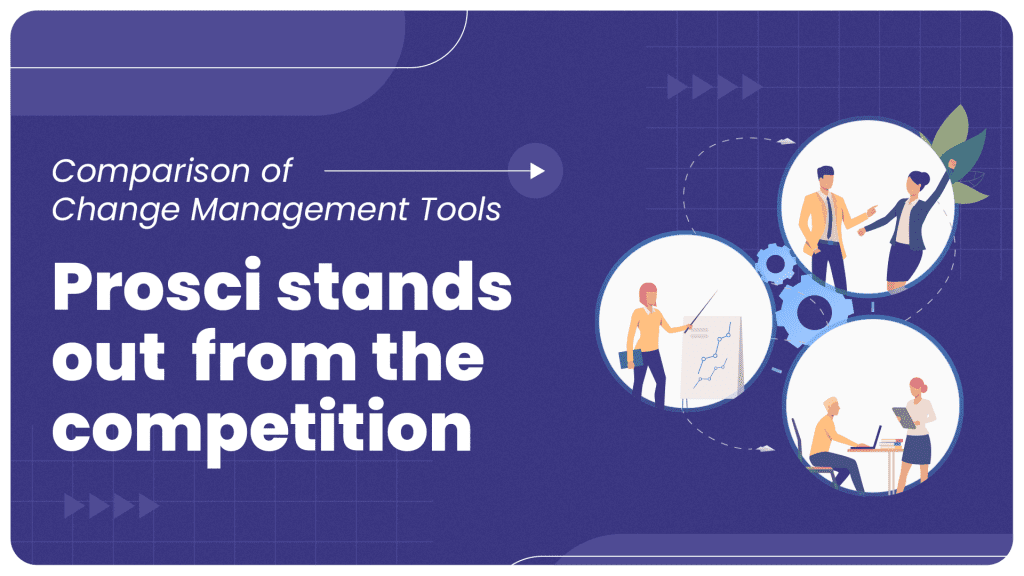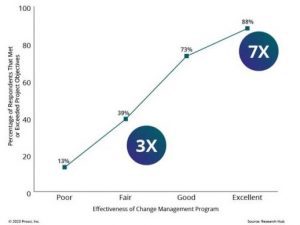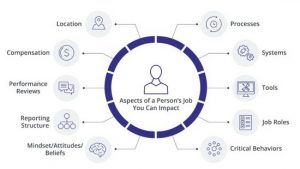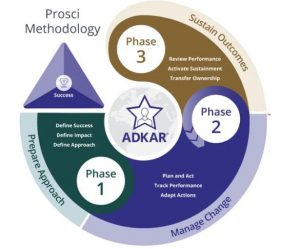

Organisations frequently merge various models, methodologies, technologies, and additional resources to create the illusion that their tools are everything required to effectively implement change.
But here’s the catch: Every tool serves a unique purpose during times of change. Given the abundance of misinformation, how can you discover what you truly require?
At Marg, we believe that clarity and structure are the foundation of successful change. Backed by over 25 years of global research, Prosci Change Management tools offer a proven, people-centric approach to drive adoption, reduce resistance, and ensure outcomes.
Result Driven Change Management Tools
These tools are resources, models, methodologies, or software that practitioners use for certain change activities. Many organizations and practitioners face these listed common challenges while selecting change management tools:
1. These cannot be compared with any other tool.
2. Find single tool to address all challenges.
3. They believe that the tool is the key to success, but real success comes from competent practitioners strategically using the appropriate tools.
It’s also common to assume that “tools” only mean software. However, these tools also include frameworks like the ADKAR Model, process templates, and readiness assessments.
One standout is the Prosci Methodology – a repeatable, research-driven process designed to build adoption and usage. Studies show that applying a structured approach to change makes success seven times more likely.


Change management tools can also be used to:
· Measure change impact
· Share insights to make informed decisions
· Refine strategies and enhance future efforts
· Upgrade communication and collaboration
· Simplify workflows
· Reduce the root causes of resistance
Let’s explore different tools in change management and how they’re being implemented.
Change Management Tools You Need Know About
Most of these tools are categorized based on their primary functionality, including tools for assessment, alignment, or planning. Certain tools fit into multiple categories based on their application, according to their intended use. These tools are essential for evaluating the progress and effectiveness of change initiatives.
1. For Assessment
Assessments are structured evaluations that highlight the areas of strengths, challenges, and areas for improvement.
They come in many different forms, each designed to solve certain challenges during the process of transformation. Examples include risk assessment and the ADKAR Assessment, which leverage our ADKAR® Model to assist in identifying barriers to change for individuals. Prosci’s Aspects of Change Impact Canvas is among the most thorough assessment tools.
The 10 Aspects of Change Impact Canvas
The 10 aspects of change impact which help practitioners assess how individual roles will transform and equip them to create effective strategies for smoother transitions. Change practitioners can develop focused strategies that provide clarity and eliminate obstacles that cause resistance and smoothen transition.


Image Ref: Prosci
This assessment contains 10 areas that may influence individuals and groups during change, including:
1. Processes – The defined sequence of actions or workflows that drive toward specific outcomes.
2. Systems – Interconnected people, technologies, and procedures structured to achieve organizational goals.
3. Tools – Resources or instruments—whether physical or digital—used to carry out tasks or functions.
4. Job Roles – Defined responsibilities and competencies that outline what is expected in a specific position.
5. Critical Behaviors – Essential individual or group actions that influence how change is adopted and sustained.
6. Mindsets, Attitudes, and Beliefs – Internal perspectives and mental frameworks that shape outward behavior and openness to change.
7. Reporting Structures – Hierarchies and workflows that determine how accountability and performance are tracked.
8. Performance Management – Systems and KPIs used to evaluate progress and outcomes related to the change initiative.
9. Compensation – Financial and non-financial rewards associated with roles, performance, and responsibilities.
10. Location – The physical workplace or environment where work is performed, which can influence team dynamics and operational execution.
2. For Alignment
Ensuring every stakeholder is working toward a unified vision is critical to any successful change initiative.
Alignment tools play a vital role in making this possible – they synchronize leadership direction, communication channels, and implementation efforts across all levels of the organisation.
These tools help weave the change effort into the fabric of the organisation’s strategic priorities. When alignment is strong, change management becomes a driver – not a disruption – of business growth. Two proven tools that help with alignment include the Prosci Change Triangle (PCT) Model and the 4P’s Model, both of which offer a structured approach to unify people, purpose, processes, and performance.
3. For Planning
Strategic planning is the backbone of any change management effort. Tools in this category provide a structured way for practitioners to outline the essential actions, timelines, people involved, and resources required to achieve successful outcomes.
Planning templates bring clarity to communication strategies, resource allocation, accountability, and progress tracking. Tools like Change Management Plans and Role Rosters are used to define responsibilities and create shared visibility.
ADKAR Blueprint
One powerful tool that guides planning in change management is the ADKAR Blueprint. It’s an extension of the Prosci ADKAR Model, which focuses on the five building blocks of individual change – Awareness, Desire, Knowledge, Ability and Reinforcement.
Here’s how the ADKAR Blueprint can be applied as a:
Guide for small changes – The ADKAR Blueprint can be your sole guide during a low-risk, small, or incremental change.
Accommodating differently impacted groups – A major change can lead to differences in how employee groups are affected. To accommodate their needs, you can create one ADKAR Blueprint for the organisation and one for each group.
Simpler plan for novice practitioners – The ADKAR Blueprint can be a starting point for planning the application of change management by novice practitioners.
Foundation for change management plans – This ADKAR Blueprint serves as the foundation for a plan that supports individuals through change.
Lastly, successful change management is built on sound planning and having the right tools that make all the difference in achieving desired outcomes.
4. For Adoption
The real measure of success lies in how well individuals adopt and apply the change. Adoption tools equip employees with the mindset, skills, and support to move confidently through the transition.
These tools include frameworks, models, and methodologies built on industry research and best practices. They are flexible enough to support various change contexts—from rolling out new technologies and shifting business processes to reshaping organisational culture.
By focusing on the human side of change, these tools ensure that change is not just implemented but truly embraced—delivering measurable, lasting results.
Prosci offers three primary tools to drive change adoption:
Prosci Methodology
The Prosci Methodology is a structured, adaptable and repeatable approach to enable the people side of change and deliver organisational results. It is one of the world’s most widely used approaches to change management.
The methodology is grounded in best practices and extensive research, providing a clear framework for managing change. It is adaptable to various types of change, including new technology, business process improvements or cultural shifts.
The Prosci Methodology has three main components:
Prosci Change Triangle (PCT) Model – for connecting the four critical aspects of successful change.
Prosci ADKAR Model – to guide individuals through the transition.
Prosci 3-Phase Process – for managing change at the organisational level


Image Ref: Prosci
By applying the Prosci Methodology, practitioners can address the specific needs of their organisation and its people. This increases the adoption and use of critical change projects and initiatives.
Explore our next Prosci Certification – Change Management in India training program | Marg
Digital Tools for Applying Change Management
Digital tools enhance change management by increasing efficiency, improving decision-making, and streamlining execution. These include project management platforms, automation software, and learning systems tailored for change initiatives.
Some noteworthy digital tools include:
· WalkMe and WhatFix: Guide employees through new technologies with real-time, in-app support
· The Change Shop and Cognician: Focus on impact assessment, planning, and behavior change
· Howspace: Encourages stakeholder engagement and collaboration
· Prosci eLearning and Prosci Hub Solution Suite: Offer structured digital learning and research support
Two standout Prosci tools designed for maximum impact:
· Kaiya: An AI-powered assistant offering contextual, expert guidance based on Prosci’s knowledge base
· Proxima: A cloud-based platform guiding practitioners through the Prosci Methodology with customisable plans and templates
These tools integrate seamlessly with the broader Prosci change management ecosystem.
Why Prosci Tools Are Trusted Worldwide
Prosci change management tools are considered best-in-class solutions because:
. Developed from 25 years of research as well as experience working with clients through our expert Advisory Services.
· Seamlessly integrated across individual and organisational levels
· Scalable, repeatable, and structured for consistency
· Backed by real success stories from companies like Crowley, Avangrid, and Velera
Prosci Change Management Tools For Success
The full suite of Prosci change management tools offers more than just templates or frameworks – it delivers a comprehensive system for building enterprise-wide change capability. At Marg Business Transformation, we’ve seen firsthand how organisations can multiply success when these tools are implemented with the right coaching, contextualisation, and cultural alignment.
From the Prosci Methodology and ADKAR Blueprint to powerful platforms like Kaiya™ and Proxima, these tools aren’t just about planning change – they’re about making it stick.
If your goal is to go beyond generic change management and adopt a structured, research-based approach, now’s the time to invest in Prosci change management. As Prosci’s official partner in India, Marg offers you both the tools and the transformation expertise to lead sustainable change. Get in touch to explore how Prosci tools can be tailored to your transformation roadmap. [Contact Us]